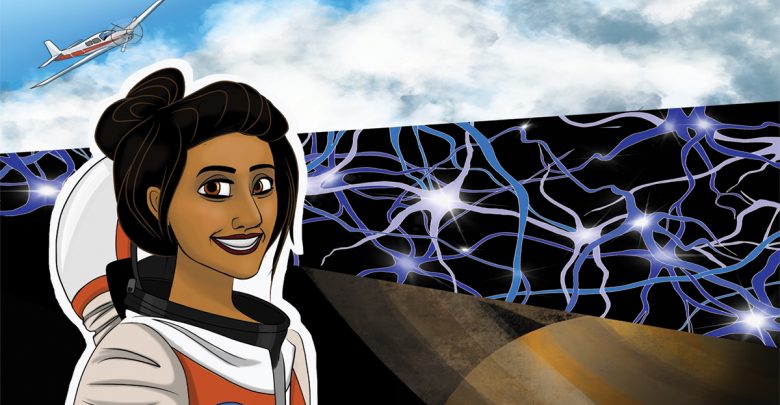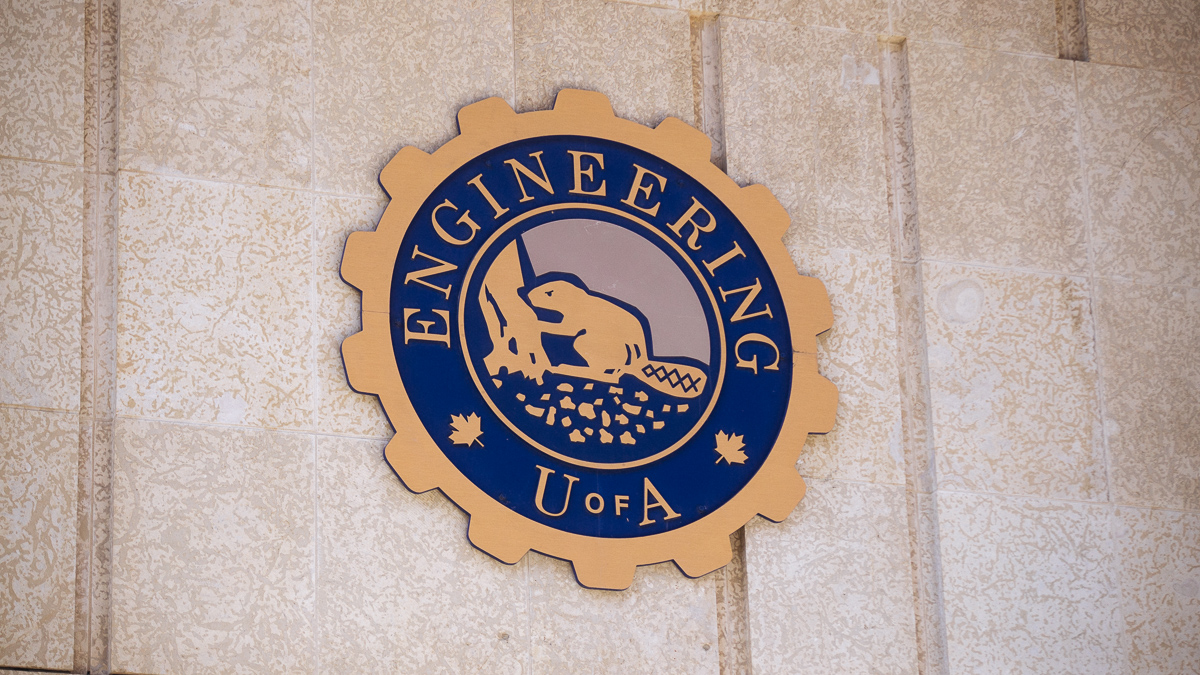 Olivia DeBourcier
Olivia DeBourcierDr. Shawna Pandya’s life reads like the origin story of a superhero before they get their powers. She grew up in Sherwood Park and completed her undergraduate degree in honours neuroscience at the University of Alberta, going on to do her master’s in space studies at the International Space University in France before returning to the U of A to complete her degree in medicine.
Dr. Pandya is currently training to become a citizen-scientist astronaut with the PoSSUM and PHEnOM projects, which study upper atmosphere clouds and microgravity, and is co-founder of CiviGuard, a disaster response technology developed alongside her peers at Singularity University in 2009. She is a skilled martial artist and speaker, is working on getting her private pilot license, and is certified in skydiving, scuba diving, and survival training.
The Gateway interviewed Dr. Pandya last March while she was in Prince Albert, Saskatchewan completing her residency training in family medicine. This interview occurred about an hour after she finished assisting in an emergency delivery of a baby, because that’s just how she rolls.
The Gateway: What inspired you to go into STEM?
Dr. Pandya: I was always a very sciency, mathy, nerdy kid. In high school I thought, “Well, you can’t go to school to be an astronaut, so what else can I do?” So I opted to follow in the footsteps of one of my heroes, the first Canadian female in space: Roberta Bondar, a neurobiologist. Therefore, the next step was to do something neuro. So that’s what led me to want to be a neurosurgeon.
Which of your experiences have you found to be the most formative?
If we want to look at the undergraduate phase, I was always driven to do everything I possibly could that interested me. So yes, I was taking six courses at a time, but I was also very involved in the Students’ Union community and the larger student community. I was on 10 SU boards and committees, I was an SU councillor, I was involved in orientation — I even dressed as GUBA. I was also head of the undergraduate science society and the president of the Neuroscience Students’ Association, and I was involved with the debate society.
Also my time at the space university was amazing; it was like a year at Starfleet Academy. From there I went to intern at the European Astronaut Centre Crew Medical Support office and that’s when I realized I could meld my passion for medicine and space into a career. This fueled my desire to become a citizen-scientist astronaut.
What is a citizen-scientist astronaut?
When I say I’m a citizen-scientist astronaut candidate, that’s separate from what governmental agencies like the Canadian Space Agency or NASA are doing. The term citizen-scientist means that you are curious and passionate about science and you may not be trained formally in the field, but you do have some background and are keen to help contribute to science. Project PoSSUM is one of the citizen science projects I’m involved in. The thought was to go up into space as citizen-scientist astronauts to gather data behind these clouds thought to be related to climate change.
To think that I could be in a space suit in zero gravity and contribute to science is mind-boggling and still excites me to this day. You can’t be in a space suit and not have a giant grin on your face, because it’s so much fun.
What value does space exploration hold for you?
Humans are explorers by nature — they’re scientists, they discover, they innovate. To purposely stick to Earth would be to go against our nature. Often there’s the perception that, “Oh why would we explore space when we have so many problems on Earth?” Really that’s a false dichotomy. There are so many examples of space spinoffs that have benefited our daily life on Earth in medicine like vaccine storage and breast cancer imagery. So there’s both the primary driver of discovery and exploration and doing the hard things because we can, but also because they do have benefits for everyday life on Earth.
What is it that really drives you in what you do?
I love learning and there have always been things that I’ve wanted to do. I realize that our time on Earth is finite, and if I don’t do those things now then when are they ever going to get done?
And then there’s the people. A really important lesson I’ve learned is that in order to have good people around you, both to drive you and also to motivate you, you have to be one of those good people who in turn inspires others and drives others to do better.
What advice do you have for women entering Science, Technology, Engineering, and Mathematics (STEM) fields?
Be the change you want to see. If you want to see more women in STEM, then be a woman in STEM. There should be nothing stopping you if you don’t let anyone tell you otherwise. Act like you belong there, because you do belong there.
Correction – January 19, 2019: An earlier version of the article’s headline called Dr. Pandya a neurosurgeon. While Dr. Pandya completed three years of a neurosurgery residency, she did not finish the residency and instead switched to family medicine. The headline has been changed to reflect this.




